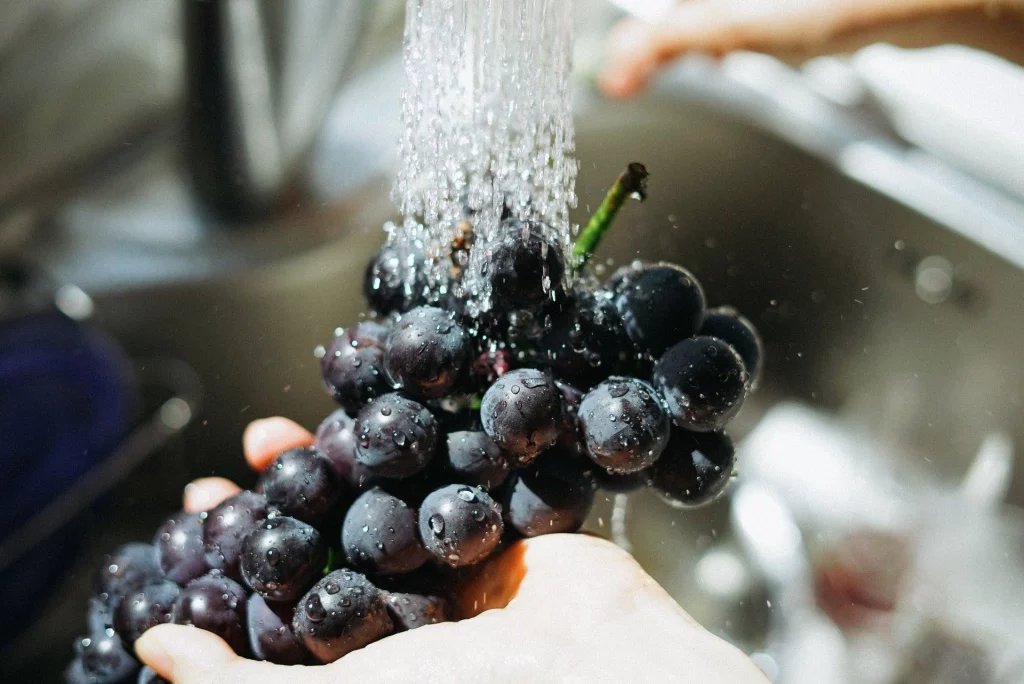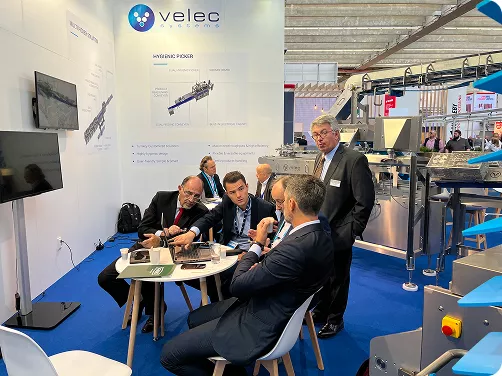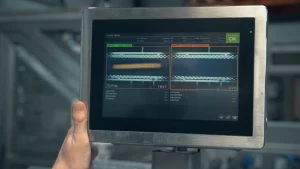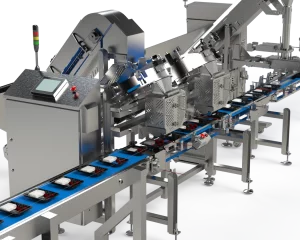Comprehensive Guide on Hygienic Design for Food Filling Systems

This is Part 1 of a two part post. Find Part 2 here.
In the heavily regulated processed food industry, establishing and practicing a strong food safety culture is integral to business success. The risks of ignoring hygiene checks, or taking food safety lightly are so severe, that the slightest misstep could threaten the survival of your business. Contamination in your production line could happen due to several reasons. For example:
- Residue of cleaning agents.
- Presence of unwanted microbes or pathogens.
- Stray hairs, plastic pieces, broken glass, etc., that could accidentally adulterate the food.
Recent research indicates that in the US alone, there are an average of 650 to 750 food recalls every year due to chemical, biological or physical contamination. This includes meat, fish, poultry, and other processed or frozen, ready-to-eat products. Often, the sheer speed and range of product distribution causes local incidents to quickly evolve into international emergencies. Although food audits and quality checks usually detect potential issues, ensuring proper sanitation across the supply chain will help prevent contamination in the first place. This would mean practicing the highest levels of hygiene for both, your food filling machinery and your facility.
At Multi-Fill, we specialize in a wide range of food filling solutions, and are a recognized leader. All our food fillers and batch feed systems are compliant with the manufacturing standards stated by major regulatory bodies, such as ANSI, FDA, USDA and CE. In this two-part series, our product experts throw light on various aspects of sanitary machine design. Part One will cover the basic principles of sanitary machine design, and how food safety standards continue to evolve. In Part Two, we will cover the key benefits of sanitary machine design, and critical considerations while selecting such equipment for your production line.
Food Safety Standards Continue to Evolve
The ‘Blue Book’ created by the United States Department of Agriculture (USDA) was one of the earliest documentation on food safety guidelines, in addition to the ones released by certain food companies and engineering firms. In 2002, the American Meat Institute (AMI), now known as North American Meat Institute (NAMI) developed 10 principles for sanitary equipment design, which we will cover in detail in the next section. During that decade, several other food manufacturers and regulatory bodies contributed to additional food safety standards for generic food groups, as well as specific food industries. For example:
- In 2001, the US Food and Drug Administration (FDA) released the “Food Safety Guidelines for the Fresh Cut Produce Industry”.
- In 2009, the Grocery Manufacturers’ Association (GMA) modified NAMI’s principles to better address low-moisture food operations. The “Industry Handbook for Safe Processing of Nuts” specifically addresses peanut and tree nut shellers, hullers, processors, and manufacturers.
- AIB International (American Institute of Baking) facilitates food safety for grain-based products, and plays a critical role in promoting sanitary machine design and operations, as well as food integrity, globally.
- Other institutions who have developed standards or guidelines for food manufacturing or processing equipment include the American National Standards Institute (ANSI), 3A, National Science Foundation (NSF), and the European Hygienic Engineering and Design Group (EHEDG)
Additionally, the FDA’s Food Safety Modernization Act (FSMA), which came into effect since 2011 has been instrumental in transforming food safety systems, and focusing on prevention of food contamination. While adoption of the various guidelines is voluntary, compliance with FSMA is mandatory. This has promoted many fresh-cut and produce processors to take a closer look at various aspects of their operations, including their food filling solutions.
Know the Basic Principles of Sanitary Equipment Design
Although originally designed to minimize the spread of Listeria in meat processing plants, NAMI’s principles of sanitary equipment design are quite universal and apply to all types of processed food facilities. They focus on the equipment and machines that could potentially harbor pollutants, and address machine hygiene, in terms of both, design and maintenance.
Use these guidelines as a checklist while upgrading or purchasing equipment for your production line.
Microbiological Level Cleaning: Does the equipment construction ensure efficient and effective cleaning over its entire lifetime? Its design should prevent entry, survival, growth or reproduction of bacteria on the product, as well as non-product contact surfaces.
- Microbiological Level Cleaning: Does the equipment construction ensure efficient and effective cleaning over its entire lifetime? Its design should prevent entry, survival, growth or reproduction of bacteria on the product, as well as non-product contact surfaces.
- Materials Compatibility: What is the construction material used in the equipment? Is it easy to clean, and compatible with the materials or chemicals used during food processing and sanitation?
- Accessibility: Does the equipment design allow for cleaning and sanitation systems to easily access every part of the equipment? Does the accessibility aspect extend to ease of maintenance and inspections as well?
- No Product or Liquid Accumulation: Does the equipment include self-draining capabilities? This is critical to ensure that any liquid that can harbor or promote bacterial growth does not pool or condense on any of its surfaces.
- Sealing of Hollow Areas: Does the equipment feature any frames or rollers? If yes, are they permanently sealed? Are the brackets, bolts, studs, mounting plates, junction boxes, end caps, and sleeves properly welded to the surfaces? If such components are attached via drilled and taped holes, you may want to think twice about purchasing such equipment.
- No Niches: Is the equipment free of cracks, gaps, pits, crevices, grooves, protruding ledges, bolt rivets, or open seams? These areas potentially harbor pathogens, and are difficult to sanitize.
- Sanitary Operational Performance: Does the equipment maintain high standards of sanitation while operational? Well-designed machines will not contribute to bacterial harborage or growth.
- Well-Designed Maintenance Enclosures: Are the interfaces, such as switches, push buttons, and touchscreens located in a position where product residue or water cannot penetrate or accumulate?
- Production Line Compatibility: When the equipment is operational, does it ensure hygienic compatibility with other systems in the production line, such as the electricals, hydraulics, drainage, and ducting systems?
- Validated Cleaning and Sanitizing Protocols: Have the equipment manufacturers provided clearly written, ‘proven-effective’ procedures and protocols for cleaning and sanitation? Such pointers could help you maintain your own documentation and records for the cleaning and sanitization protocols in your production line. This is a critical requirement for FSMA compliance. FDA inspectors review your documentation, and ask additional proof to ascertain that you are carrying out proper machine sanitation.
Follow the Sanitary Design Principles for Facilities
Equipment design hygiene cannot successfully prevent food contamination, unless it extends to your plant or production facility. In 2004, NAMI’s Facility Design Task Force (FDTF) released the “Sanitary Design Principles for Facilities”. These 11 principles serve as an excellent reference point while designing or renovating your processed food facility.
- Establish distinct hygienic zones within the production area.
- Strategically control the movement of personnel and materials to reduce hazards.
- Control water accumulation inside the facility.
- Regulate the room temperature and humidity.
- Monitor and control the room’s air flow and air quality.
- Ensure that your site elements facilitate sanitary conditions.
- Let the building envelope facilitate sanitary conditions.
- Cleverly plan your spatial layout and interior design to promote sanitation.
- Ensure that the building components and construction simplify sanitation.
- Design utility systems in a manner that they prevent contamination.
- Ensure that sanitation is integrated into every aspect of the facility design.
Gain a Competitive Edge with Sanitary Design Equipment and Facilities
Following the principles of sanitary equipment and facilities will help you develop robust, at-source protection against the various chemical, biological and physical food contamination risks. In fact, like all forward-thinking companies, it’s important to not stop at the guidelines. Use a variety of resources, including experienced designers, third-party consultants, or other specialists, who can ensure sanitary design success for your specific processed food setup.
Learn more about investing in sanitary machine design in Part II of this blog .
Explore the wide range of sanitary design, world-class, food filling solutions from Multi-Fill. Call 801-280-1570 or contact us online .



